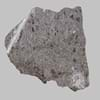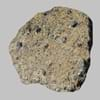Formation
Icelandite is a fine-grained, hard rock which is a type of metasomatite, essentially altered basalt. It forms with or without crystallization, either below the surface as intrusive rocks or on the surface as extrusive rocks.
Peridotites can be formed in two ways: as mantle rocks formed during the accretion and differentiation of the Earth or as cumulate rocks formed by precipitation of olivine and pyroxenes from basaltic magmas.
Mineral Content
Amphibole, Apatite, Biotite, Feldspar, Garnet, Hornblade, Ilmenite, Magnetite, Plagioclase, Pyroxene, Quartz, Zircon
Amphibole, Chromite, Garnet, Magnesium, Olivine, Phlogopite, Plagioclase, Pyroxene
Compound Content
Silicon Dioxide
Ca, Fe, Mg, Potassium, Silicon Dioxide, Sodium, Titanium Dioxide
Types of Metamorphism
Burial Metamorphism, Cataclastic Metamorphism, Contact Metamorphism, Hydrothermal Metamorphism, Impact Metamorphism, Regional Metamorphism
Burial Metamorphism, Cataclastic Metamorphism, Contact Metamorphism, Hydrothermal Metamorphism, Impact Metamorphism, Regional Metamorphism
Types of Weathering
Biological Weathering
Biological Weathering, Chemical Weathering, Mechanical Weathering
Types of Erosion
Chemical Erosion, Coastal Erosion, Sea Erosion, Water Erosion, Wind Erosion
Chemical Erosion
Icelandite and Peridotite Formation
Formation of rocks is a long process and hence, Icelandite and Peridotite formation sounds very interesting. According to the formation, all rocks are divided into :Igneous Rocks, Fossil Rocks and Metamorphic Rocks. Igneous rocks form by crystallization of magma or lava. The magma is made up of various components of pre-existing rocks which have been subjected to melting either at subduction zones or within the Earth's mantle. Igneous rocks are generally seen at mid ocean ridges or in intra-plate hotspots. Sedimentary rocks are formed when sediments accumulate gradually. As the sediments are buried they get compacted as more and more material is deposited on top. Eventually the sediments become so dense that they form a rock. Metamorphic rocks are rocks which once existed as igneous or sedimentary rocks but have been subjected to varying degrees of pressure and heat within the Earth's crust. Get to know all about formation of Icelandite and Peridotite, composition of Icelandite and Peridotite and their transformation.









